An effective public address system must be carefully designed. Different installations have different product requirements and layouts. System efficiency and sound clarity are shared goals.
An effective public address system must be carefully designed. Different installations have different product requirements and layouts. System efficiency and sound clarity are shared goals.
Public address (PA) systems are required everywhere and product requirements vary by installation. Each deployment must be carefully planned to ensure a clear and long-lasting PA system.
Layout Design
A proper hierarchy layout should be considered during installation. When an emergency message is activated, all other sound sources will be switched off.
"A call-stacker makes a convenient system, recording calls for automatic playback later to zones that could not be addressed because they were occupied by a higher priority call," said Terence Ng, Senior Product Marketing Manager, Public Address and Conference Systems, Robert Bosch (SEA), Bosch Security Systems.
The number of speakers and positioning must be considered. "The loudspeakers should be mounted so the sound pressure level (SPL) is even for all listening positions and for all frequencies of interest," Ng said. "Normally, guidelines are provided as an indication to how many loudspeakers should be used and what the distance between the loudspeakers should be."
Accurate speaker positioning requires a delicate balance. "This is a trade-off between flatness of response and the number of loudspeakers used," Ng said. "The use of more loudspeakers makes the level more even."
Speaker design contributes to sound clarity. "The wider the opening angle of the loudspeakers, the better the frequency response at a location between the two loudspeakers will be," Ng said.
Zone mixers prevent extreme volume differences for different zones. "Zone mixers give users control of each zone's output independent of the others, thereby allowing control over each individual speaker's output level," said Grant Murray, Product Marketing Specialist for Phonic.
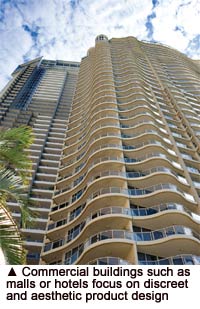 Measuring the SPL and impedance needed for each zone at the design stage helps form a successful system. "We provide both solution and technical support with a relative test of volume and impedance for each zone," said Marco Morimanda, Product Manager at Paso. "The 100V technology allows different tapping for the same speaker."
Measuring the SPL and impedance needed for each zone at the design stage helps form a successful system. "We provide both solution and technical support with a relative test of volume and impedance for each zone," said Marco Morimanda, Product Manager at Paso. "The 100V technology allows different tapping for the same speaker."
Installations have different system needs by size. "For situations where many announcements can be made simultaneously, such as airports, digital PA systems that offer a large number of dynamically allocated sound channels are preferred," Ng said. "Analog PA systems offer a one- or two-channel capability. Having one channel for calls and one channel for background music is a typical design, so calls will not interrupt music to zones not receiving the call."
Indoor and Outdoor
Notification functions are similar for indoor and outdoor applications, but product design differs.
Durability is essential for outdoor systems, making ruggedized weatherproof features preferred. "There are many differences in product design," said Antonio Ferrari, Audio Contractor Market Manager, RCF. "The design for transducers' cones and diaphragms and cabinets need to use robust roto-molded UV-treated plastic. Coated steel-reinforced materials combined with watertight connectors are used instead of wood. Accessories also need to be manufac?tured with different specifications and materials."
Along with external case design, speaker placement should consider weather conditions. "The outdoor ambient environment varies from time to time," said Kaz Shimizu, Product Marketing Manager, TOA. "If the direction and intensity of wind or temperature changes, the SPL may differ. Installation-wise, changes in ambient conditions should be taken into account for speaker placement."
Indoor installations require speakers that can cover short distances with clear sound quality. "Typical indoor ceiling speaker are often vertically configured," 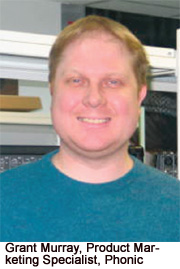 Murray said. "Ceiling speakers feature a curved line, having a different vertical coverage area and are designed to cover relatively short distance applications."
Murray said. "Ceiling speakers feature a curved line, having a different vertical coverage area and are designed to cover relatively short distance applications."
Product appearance is another consideration. "Shopping malls are more concerned about aesthetic design than SPL," Morimanda said. "But for outdoor applications where high SPL is required, speaker clarity is more important than an aesthetic design."
Self-Diagnosis and Redundancy
A reliable system must have self-healing functions. "Our self-diagnosis function automatically monitors data transmission and checks the audio path and power lines," Shimizu said. "In case of a failure, the self-diagnosis indicates the error and changes the failed equipment to a stand-by unit, if a spare is provided."
Systems with full monitoring circuits and redundancy facility for both amplifiers and speakers ensure system reliability. "Any fault and system logs are collected, and reported through different means such as LCDs, LED indicators, buzzers and networked PCs," Ferrari said.
Having a fail-safe design ensures communication remains crystal clear. To prevent short circuits and system overload, amplifiers need reliable components. "The forced-ventilation cooling system and the numerous electronic and thermal protection devices ensure maximum reliability of operation," Morimanda said. "We foresee for each speaker a thermal block (built-in or not), provided with thermal fuse and ceramic plugs for each amplifier."
Notification solutions must account for power surges. "For outdoor systems, the main controller can have a specially designed IC chipset to protect the system in case of a lightning strike," said Penny Wu, Marketing Manager, BXB Electronics. "If the system is struck by lightning, only the chipsets would burn instead of the system."
Clip limiters increase system stability. "Occasional clipping is no big deal, but excessive clipping can stress things out," Murray said. "When extreme clipping occurs, it greatly reduces the efficiency of an amplifier circuit."
The limiter keeps sound consistent. "These 'flat tops' of the distorted output waveform — either due to incorrect biasing or overdriving the input — do not 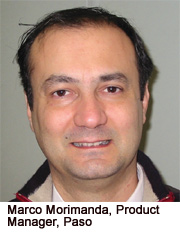 contribute anything to the strength of the output signal at the desired frequency," Murray said. "When the amplifier is pushed hard, the clip limiter automatically finds the exact point of overload and keeps the amplifier in its peak zone, preventing extreme distortion without reducing performance. The low frequency filter and clip limiter are often separately adjustable for each channel."
contribute anything to the strength of the output signal at the desired frequency," Murray said. "When the amplifier is pushed hard, the clip limiter automatically finds the exact point of overload and keeps the amplifier in its peak zone, preventing extreme distortion without reducing performance. The low frequency filter and clip limiter are often separately adjustable for each channel."
Digital and Analog Systems
PA systems must be highly customized. The best system is one that satisfies the requirements of an installation.
Digital PA systems can represent sound better with its original integrity. "A fully digital public address system processes and communicates both audio signals and control data entirely in the digital domain," Ng said. "We have a redundant ring network topology for distributed positioning of system components."
Digital PA systems with wireless microphones need to account for frequency interference. "High-quality wireless microphones can prevent frequency interference and ensure sound clarity," Shimizu said. "Today a variety of shapes, directivities and signal-transmission methods help make microphone selection easier."
Although digital PA systems offer powerful functionalities, existing analog PA systems still dominate the market due to price. "Analog systems can be used in 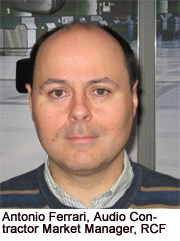 small- to medium-size applications," Ng said. "EVAC functionalities, such as system supervision, spare amplifier switching, loudspeaker line surveil?lance, digital message management and a fireman's panel interface can be combined."
small- to medium-size applications," Ng said. "EVAC functionalities, such as system supervision, spare amplifier switching, loudspeaker line surveil?lance, digital message management and a fireman's panel interface can be combined."
Technology development will make PA and voice evacuation systems more user friendly and efficient. "The Class-D amplification modules for powered speakers are new technology," Murray said. "They are designed for fixed installations and touring, offering 150 to 2500 watts of power. It highly increases system efficiency and lowers power consumption. The system's size would be compact and low-weight, with greater protection against DC, over current, under or over voltage, VHF and temperature."
Challenges
While technology for PA systems is mature, challenges still exist. "Designing flexible systems that are easy to install, set up and maintain — while keeping in 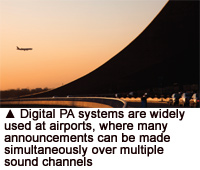 mind compliance to norms, energy-saving solutions and competitive prices — is a challenge," Ferrari said.
mind compliance to norms, energy-saving solutions and competitive prices — is a challenge," Ferrari said.
PA systems have no clearly defined standard for installations. "The lack of standards for project bureaus to determine who will install what systems is a challenge," Morimanda said.
Integration between different systems is a future trend, but product compatibility remains an issue. Integrators must have sufficient knowledge in digital systems for a successful installation. Training and technical support are required from manufacturers.